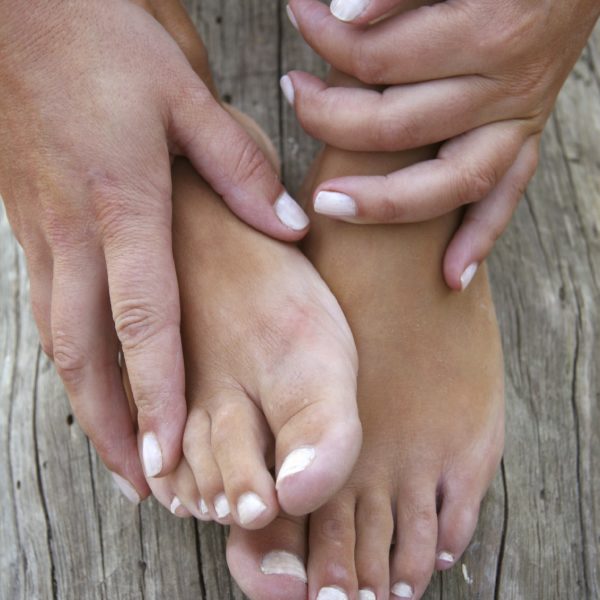Most of us take between 5,000-10,000 steps a day. Over time, this impact causes footwear wear-and-tear that tells a story about our unique biomechanics (how we move). Our team of BOARD CERTIFIED PEDORTHISTS (CPeds) can “read” your shoes to help determine gait patterns, foot conditions, or if you’re in the wrong shoe. Steve Lafond, CPed of our Wayzata location, shares some of the key wear patterns he looks for as a part of the FREE ADVANCED FOOT EVALUATION process.
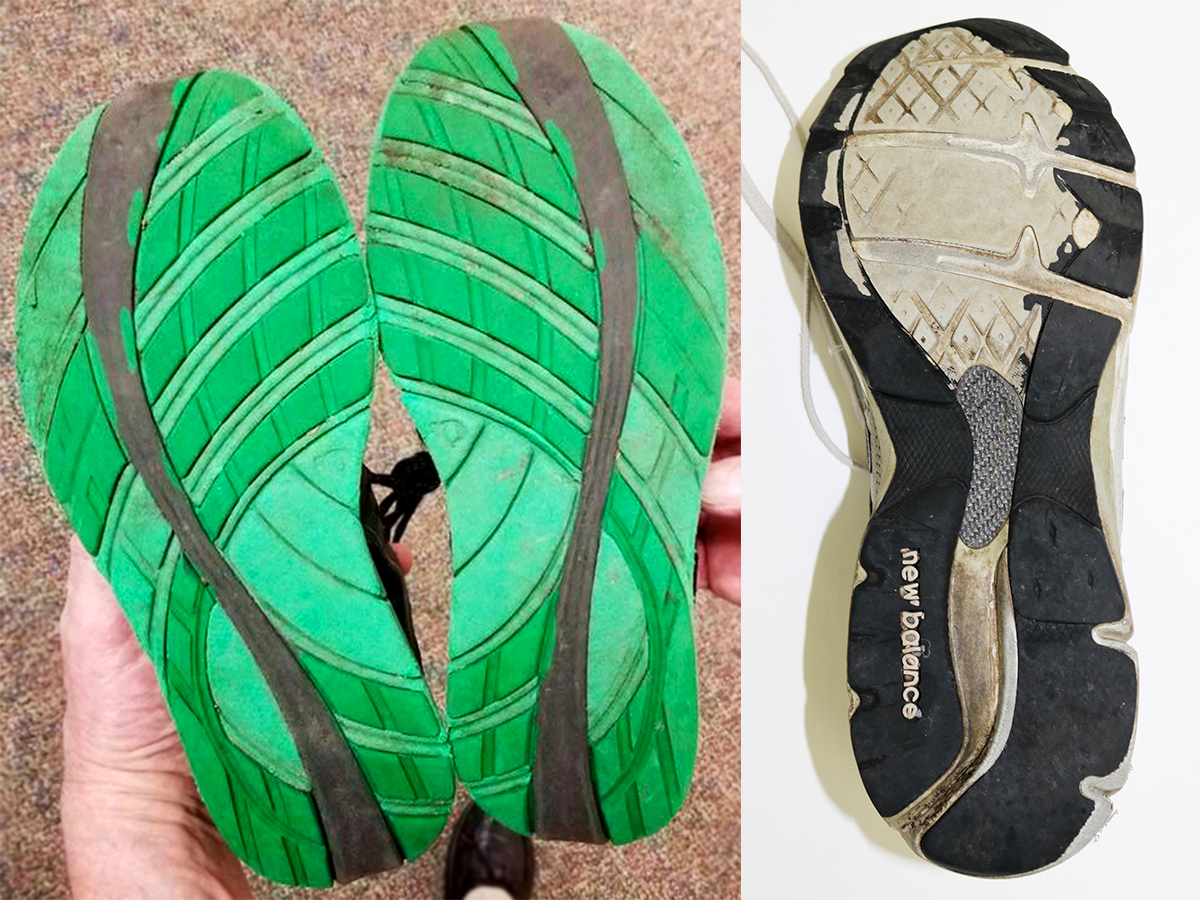
Wear patterns on the ball-of-the-foot and outside edge of these shoes likely indicate oversupination.
Neutral Pronation
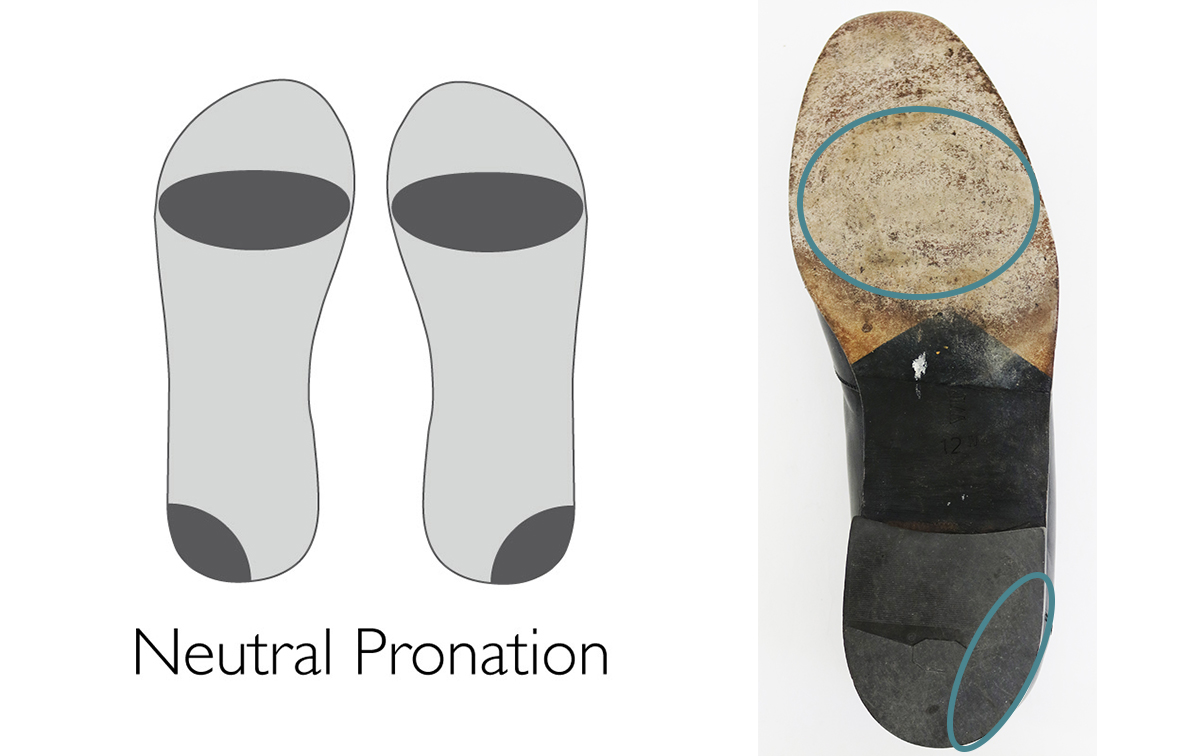
Pronation and supination are the natural, impact-absorbing movements that occur every time we take a step. Those with neutral pronation have an ideal balance of both movements. Neutral pronation will often produce heavy outsole wear:
- On the middle to outside edge of the heel where the heel strikes
- On the area between the ball of the foot and your big toe where your forefoot pushes off
- Additionally, you might have wear from the middle to outside shoe edge where bodyweight is transferred from heel to forefoot
Overpronation
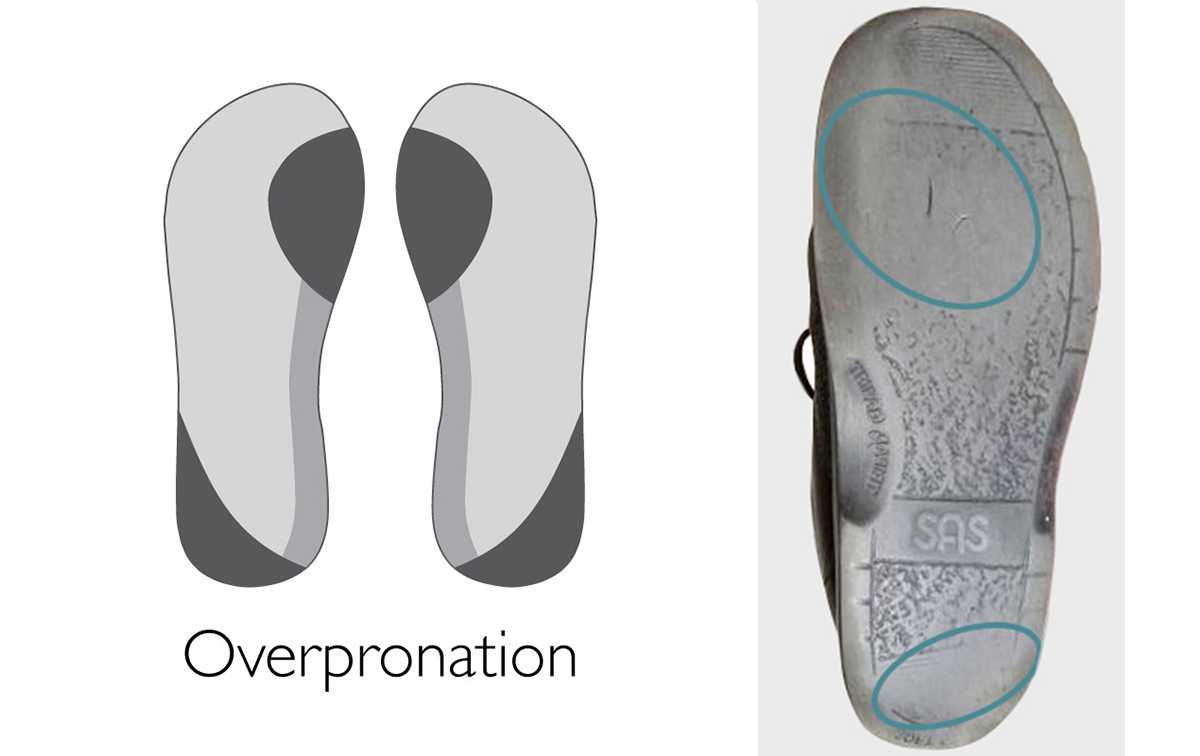
Overpronators have an excess of inward-rolling motion caused by factors like arch type and foot flexibility. Overpronation will often produce heavy outsole wear:
- On the inner edge of the shoe
- On the middle to the outside heel
- In a circular pattern beneath the ball of the foot that becomes more pronounced toward the big toe
Oversupination
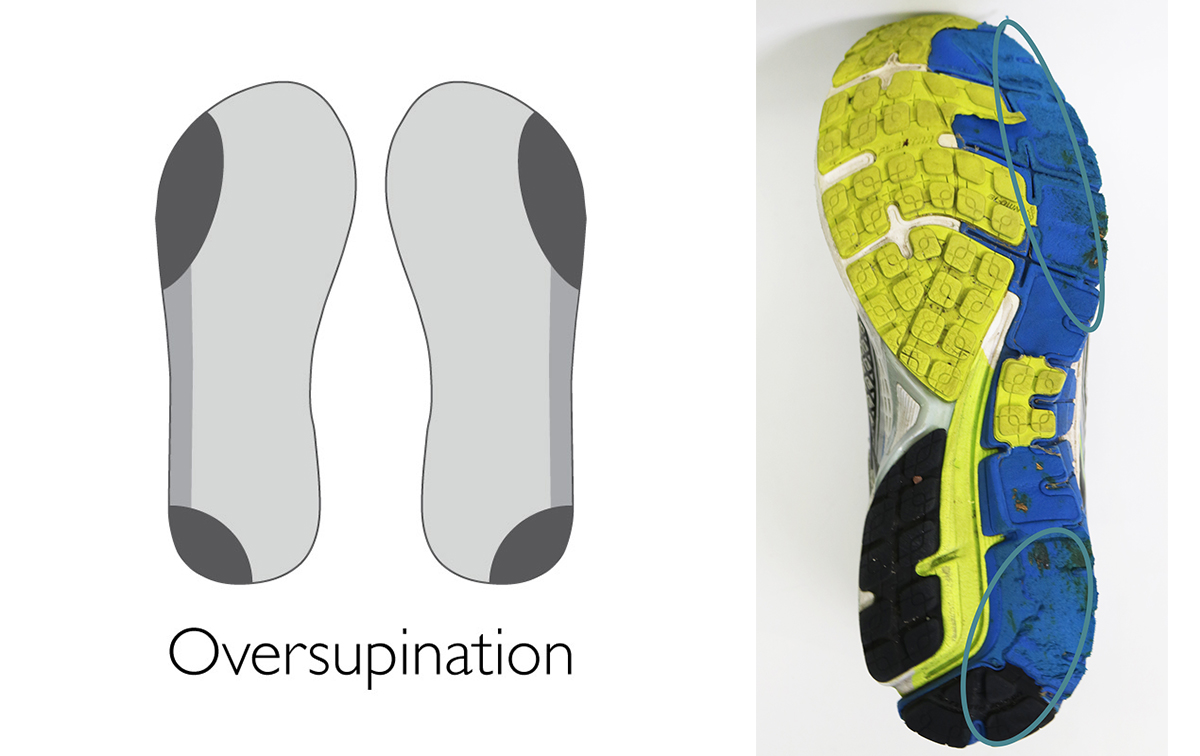
Oversupinators have an excess of outward-rolling motion caused by factors like arch type and foot flexibility. Oversupination will often produce heavy outsole wear:
- On the outside edge of the shoe
- On the outside heel
- In a circular pattern beneath the ball of the foot that becomes more pronounced toward the pinky toe
Other Common Wear Patterns
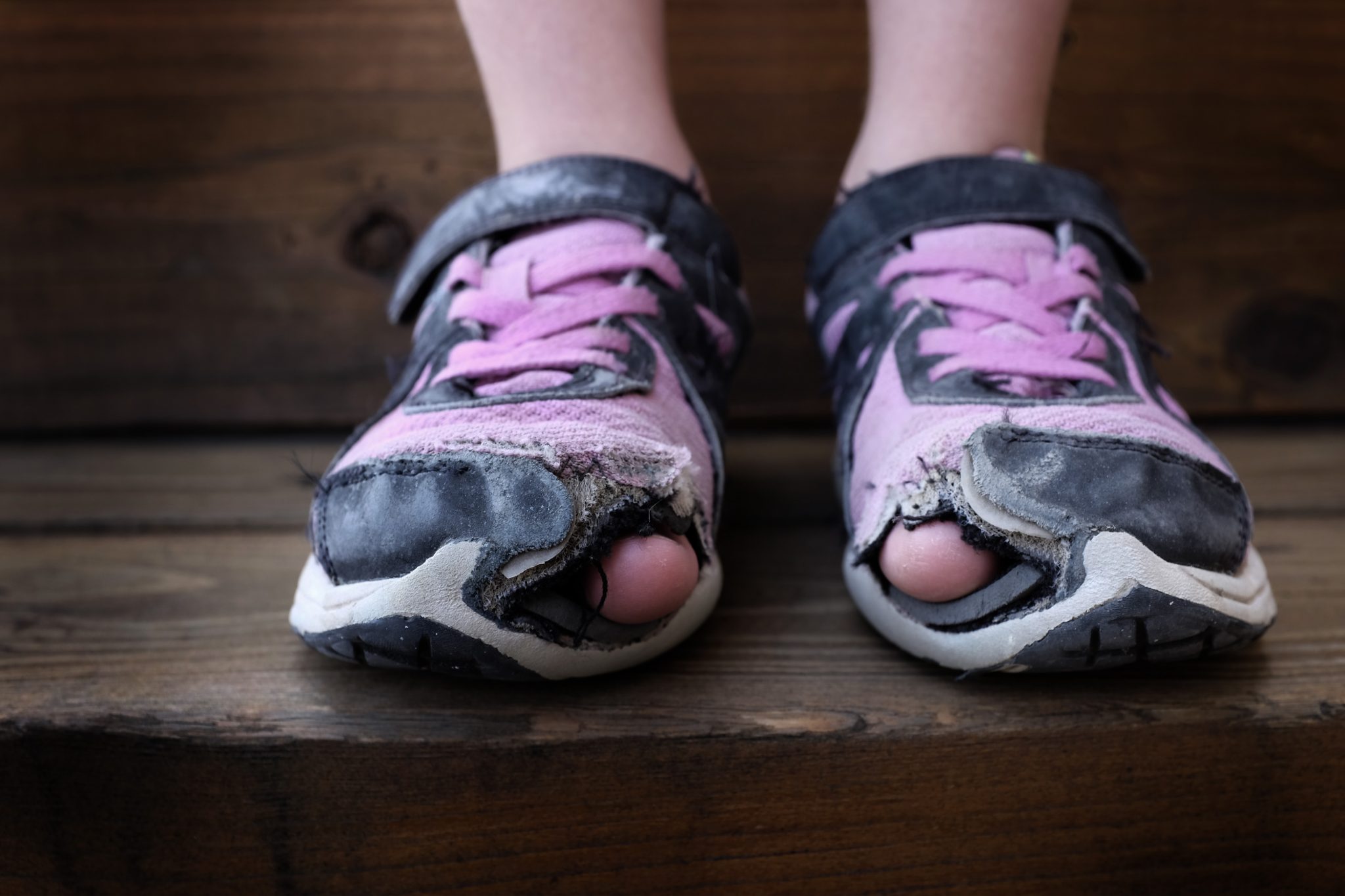
Toes Breaking Through the Toe Box
If your toe box is bursting, there could be a number of reasons including your shoes being too narrow , too shallow, not supportive enough, or too short. Also, you may be developing forefoot issues like bunions or hammer toes.
Holes Inside the Shoe
Holes in the ball of the shoe or the toe box can be evidence of excess pressure due to pivoting of the foot caused by overpronation or oversupination. Wear in the heel and sock lining can be a result of your heel tilting or the shoe being too small.

Wrinkles in the soles of your worn shoes have a number of causes our team of Certified Pedorthists (CPeds) and Fit Specialists can help identify.
Wrinkles in the Sole of the Shoe
Wrinkles in the sole can reveal normal wear and tear or that the shoe has not been properly maintained. Wrinkles may also indicate toe conditions like hammer toes or a heel-to-toe measurement issue that prevents toes from properly flexing. Since shoes tend to shorten over time from the toes bending upward and materials tightening up, using a shoe tree can help maintain the shape and cut down on wear like wrinkles in the sole.
Bending, Flexing, and Twisting
If you’re able to bend, flex, or twist your shoe easily, this can indicate a foot misalignment, overpronation, oversupination, or that the shoe is not providing enough support.
Conclusion
Assessing your wear-and-tear patterns is part of a larger evaluation process our CPeds can use to help identify what footwear will work best for you. If you’re coming in for an advanced evaluation with one of our CPeds, consider bringing a worn pair of shoes. They’ll tell us a lot about your feet and gait!
To provide an extra level of service, our friendly team of BOARD CERTIFIED PEDORTHISTS (CPeds) are available for a free foot evaluation. Our CPeds have all received special training to help you find shoes that work best for your feet, biomechanics, and activity level. CLICK HERE TO SCHEDULE A FREE FOOT EVALUATION at your NEIGHBORHOOD LOCATION.


